-
 Bitcoin
Bitcoin $99,594.2189
-3.59% -
 Ethereum
Ethereum $2,188.5793
-9.00% -
 Tether USDt
Tether USDt $1.0001
-0.02% -
 XRP
XRP $1.9745
-5.82% -
 BNB
BNB $608.9511
-3.73% -
 Solana
Solana $130.4575
-5.93% -
 USDC
USDC $1.0000
0.01% -
 TRON
TRON $0.2637
-3.59% -
 Dogecoin
Dogecoin $0.1493
-5.97% -
 Cardano
Cardano $0.5322
-6.72% -
 Hyperliquid
Hyperliquid $33.9044
3.33% -
 Bitcoin Cash
Bitcoin Cash $449.6411
-5.46% -
 UNUS SED LEO
UNUS SED LEO $8.9629
0.43% -
 Sui
Sui $2.3943
-8.35% -
 Chainlink
Chainlink $11.4402
-7.83% -
 Stellar
Stellar $0.2241
-6.49% -
 Avalanche
Avalanche $16.1489
-4.24% -
 Toncoin
Toncoin $2.7182
-5.94% -
 Shiba Inu
Shiba Inu $0.0...01040
-5.72% -
 Litecoin
Litecoin $78.7882
-4.07% -
 Ethena USDe
Ethena USDe $1.0004
-0.01% -
 Hedera
Hedera $0.1305
-7.45% -
 Monero
Monero $297.0030
-5.32% -
 Dai
Dai $0.9997
-0.02% -
 Polkadot
Polkadot $3.1834
-6.03% -
 Bitget Token
Bitget Token $3.9788
-7.03% -
 Uniswap
Uniswap $6.1327
-10.62% -
 Pepe
Pepe $0.0...08689
-8.30% -
 Pi
Pi $0.4826
-9.65% -
 Aave
Aave $219.8043
-9.69%
How to choose the EMA period? Which is more commonly used, 12 days or 26 days?
The choice of EMA period, like 12 or 26 days, depends on trading style, crypto volatility, and timeframe, affecting responsiveness to price changes in the market.
May 24, 2025 at 08:35 am
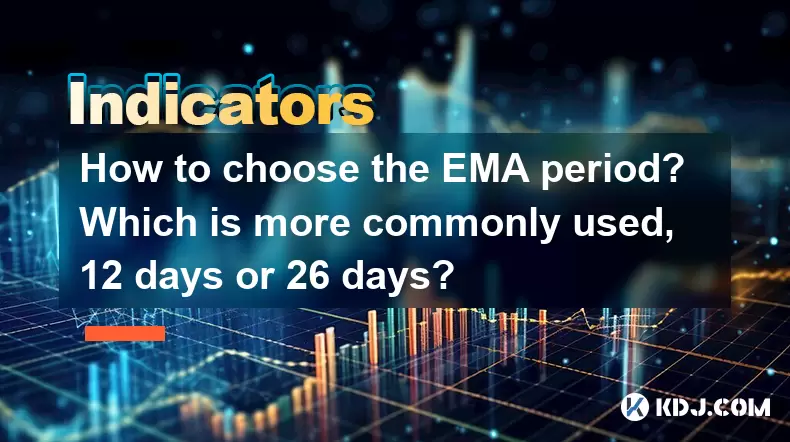
Choosing the right Exponential Moving Average (EMA) period is crucial for traders in the cryptocurrency market, as it helps in making informed decisions about buying and selling assets. The EMA is a type of moving average that places a greater weight and significance on the most recent data points. This makes it more responsive to new information compared to the Simple Moving Average (SMA). When deciding on the EMA period, traders must consider their trading style, the cryptocurrency's volatility, and the timeframe they are analyzing.
Understanding the EMA
The Exponential Moving Average (EMA) is calculated using a formula that gives more weight to recent prices, making it more sensitive to price changes than the Simple Moving Average. The formula for EMA is:
[ EMA{today} = (Value{today} \times ( \frac{2}{Period + 1} )) + (EMA_{yesterday} \times (1 - \frac{2}{Period + 1} )) ]
The period in this formula is the number of days used for the EMA calculation. The choice of this period can significantly affect the responsiveness of the EMA to price changes.
The 12-Day EMA
The 12-day EMA is a shorter-term moving average that is commonly used by traders looking for quicker signals. This period is often used in conjunction with the 26-day EMA to create the Moving Average Convergence Divergence (MACD) indicator. The 12-day EMA reacts more quickly to price changes, which can be beneficial for traders who engage in short-term trading or day trading.
To set up a 12-day EMA on a trading platform, follow these steps:
- Open your trading platform or charting software.
- Navigate to the indicators or studies section.
- Search for "Exponential Moving Average" or "EMA."
- Input the period as 12.
- Apply the indicator to your chart.
The 26-Day EMA
The 26-day EMA is a longer-term moving average that provides a broader view of the market trend. It is less sensitive to short-term price fluctuations, making it suitable for traders who prefer a more conservative approach. The 26-day EMA is also used in the MACD indicator, where it serves as the slower line that the faster 12-day EMA is compared against.
To set up a 26-day EMA on a trading platform, follow these steps:
- Open your trading platform or charting software.
- Navigate to the indicators or studies section.
- Search for "Exponential Moving Average" or "EMA."
- Input the period as 26.
- Apply the indicator to your chart.
Comparing 12-Day and 26-Day EMAs
Comparing the 12-day and 26-day EMAs is essential to understand their effectiveness in different trading scenarios. The 12-day EMA, being more responsive, is better suited for traders who want to capitalize on quick market movements. On the other hand, the 26-day EMA is preferred by those who aim to follow longer-term trends and are less concerned with short-term volatility.
In practice, many traders use both the 12-day and 26-day EMAs together to get a comprehensive view of the market. The difference between these two EMAs can provide valuable insights into the momentum and potential trend changes in the cryptocurrency market.
Choosing the Right EMA Period
Choosing the right EMA period depends on various factors, including your trading strategy, the specific cryptocurrency you are trading, and the timeframe you are analyzing. Here are some considerations to keep in mind:
- Trading Style: If you are a day trader or a scalper, a shorter EMA period like 12 days may be more suitable. For swing traders or position traders, a longer period like 26 days or even higher might be more appropriate.
- Cryptocurrency Volatility: Highly volatile cryptocurrencies may require shorter EMA periods to capture rapid price movements. Less volatile assets might benefit from longer EMA periods to filter out noise.
- Timeframe: The timeframe of your chart also influences the choice of EMA period. Shorter timeframes (like 1-minute or 5-minute charts) might use shorter EMA periods, while longer timeframes (like daily or weekly charts) might use longer periods.
Practical Application of EMAs in Trading
Applying EMAs in trading involves using them to identify trends, potential entry and exit points, and to confirm other technical indicators. Here are some practical ways to use EMAs:
- Trend Identification: When the price is above the EMA, it indicates an uptrend. Conversely, when the price is below the EMA, it suggests a downtrend.
- Crossovers: A common strategy is to look for crossovers between two EMAs, such as the 12-day and 26-day EMAs. A bullish crossover occurs when the shorter EMA crosses above the longer EMA, signaling a potential buy opportunity. A bearish crossover happens when the shorter EMA crosses below the longer EMA, indicating a potential sell opportunity.
- Support and Resistance: EMAs can also act as dynamic support and resistance levels. Traders often watch how the price interacts with the EMA to make trading decisions.
Frequently Asked Questions
Q: Can I use other EMA periods besides 12 and 26 days?
Yes, you can use other EMA periods depending on your trading strategy and the specific cryptocurrency you are trading. Common alternatives include 5-day, 9-day, 50-day, and 200-day EMAs, each offering different levels of sensitivity to price changes.
Q: How do I know if my chosen EMA period is effective?
The effectiveness of an EMA period can be assessed by backtesting your trading strategy with historical data. If the EMA period helps you identify trends and profitable trading opportunities consistently, it is likely effective for your trading style.
Q: Should I use the same EMA period for all cryptocurrencies?
No, different cryptocurrencies have different levels of volatility and market behavior. It is advisable to adjust your EMA period based on the specific characteristics of the cryptocurrency you are trading. What works for Bitcoin might not work as well for a less liquid altcoin.
Q: Can I combine EMAs with other technical indicators?
Yes, combining EMAs with other technical indicators like the Relative Strength Index (RSI), Bollinger Bands, or Fibonacci retracement levels can provide a more robust trading strategy. This multi-indicator approach can help confirm signals and improve the accuracy of your trades.
Disclaimer:info@kdj.com
The information provided is not trading advice. kdj.com does not assume any responsibility for any investments made based on the information provided in this article. Cryptocurrencies are highly volatile and it is highly recommended that you invest with caution after thorough research!
If you believe that the content used on this website infringes your copyright, please contact us immediately (info@kdj.com) and we will delete it promptly.
- Altcoins Under Pressure: Cardano and XRP Face Critical Tests
- 2025-06-23 12:25:12
- Rare Coin Fever in Wiltshire: Auctions, Errors, and Olympic Gold!
- 2025-06-23 12:25:12
- XRP Price Under Pressure: War Fears and Market Sentiment
- 2025-06-23 12:30:12
- HAI Token Private Key Leak: What Happened and How to Stay Safe
- 2025-06-23 12:45:12
- Texas Goes All In: Bitcoin Reserve Signals Big State Embrace
- 2025-06-23 12:45:12
- Pi Network's Price Plunge: Crash, Scammer Accusations, and What's Next?
- 2025-06-23 13:05:12
Related knowledge
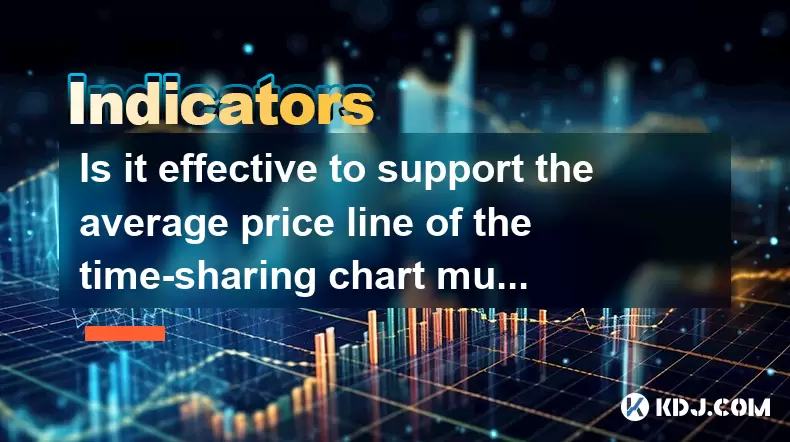
Is it effective to support the average price line of the time-sharing chart multiple times?
Jun 23,2025 at 01:36pm
Understanding the Average Price Line in Time-Sharing ChartsIn cryptocurrency trading, time-sharing charts refer to real-time price charts that display price movements over short intervals, often within a single trading day. Within these charts, the average price line, also known as the Volume Weighted Average Price (VWAP), is a commonly used technical i...
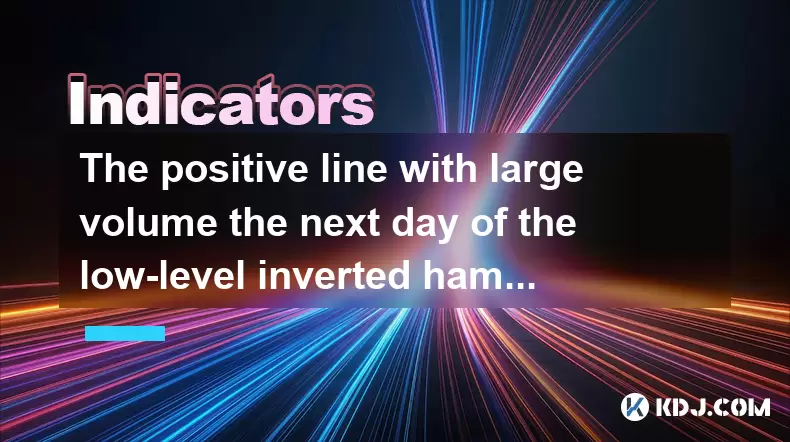
The positive line with large volume the next day of the low-level inverted hammer line confirms the reversal?
Jun 23,2025 at 01:21pm
Understanding the Low-Level Inverted Hammer LineThe inverted hammer line is a single candlestick pattern that typically appears at the end of a downtrend. It has a small real body near the bottom of the trading range and a long upper shadow, indicating that bulls attempted to push prices higher but were met with selling pressure. When this pattern forms...
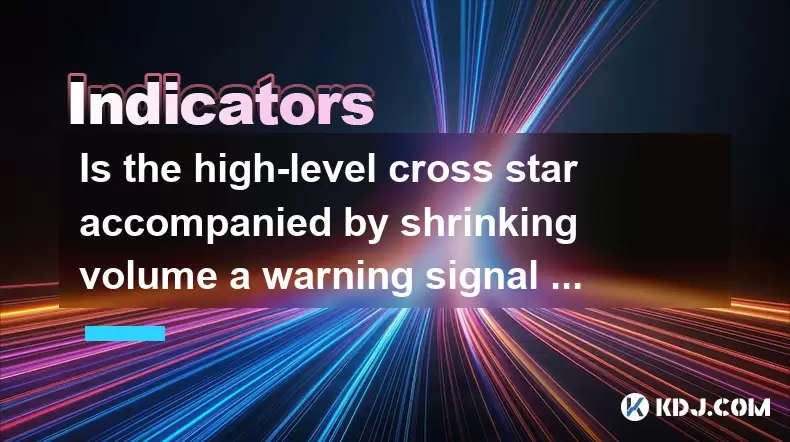
Is the high-level cross star accompanied by shrinking volume a warning signal of peaking?
Jun 23,2025 at 01:28pm
Understanding High-Level Cross Star PatternsIn the world of cryptocurrency trading, candlestick patterns are essential tools for technical analysis. One such pattern is the high-level cross star, which appears as a doji or near-doji candle at a significant resistance level. This pattern often indicates indecision in the market and can be interpreted as ...
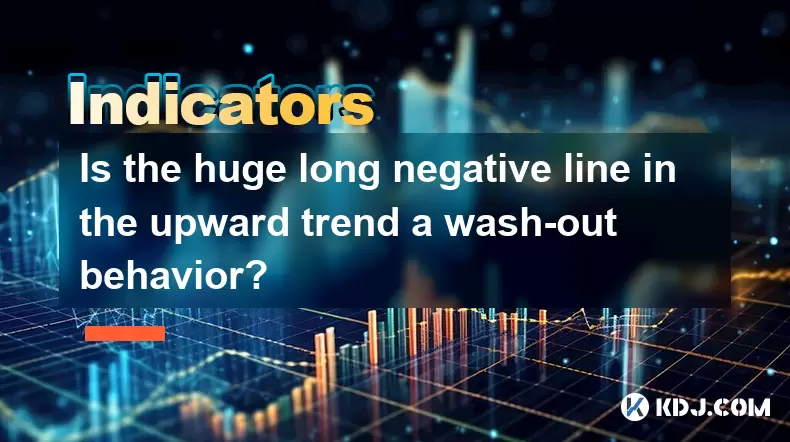
Is the huge long negative line in the upward trend a wash-out behavior?
Jun 23,2025 at 12:49pm
Understanding the Long Negative Candlestick in an Uprising TrendA long negative candlestick, often referred to as a long red or bearish candle, appearing during an upward trend can raise concerns among traders and investors. This pattern typically indicates a sudden and significant drop in price after a period of rising prices. It is often interpreted a...

Can the EXPMA golden cross stand on the 5-day line at the same time?
Jun 23,2025 at 11:42am
Understanding the EXPMA Indicator in Cryptocurrency TradingThe Exponential Moving Average (EXPMA) is a popular technical analysis tool used by cryptocurrency traders to identify trends and potential reversal points. Unlike simple moving averages, the EXPMA gives more weight to recent price data, making it more responsive to current market conditions. In...

Does the second surge in the RSI overbought zone induce more?
Jun 22,2025 at 08:35am
Understanding the RSI Overbought ZoneThe Relative Strength Index (RSI) is a momentum oscillator commonly used in technical analysis to measure the speed and change of price movements. It ranges from 0 to 100, with values above 70 typically considered overbought and values below 30 considered oversold. When the RSI enters the overbought zone for the firs...

Is it effective to support the average price line of the time-sharing chart multiple times?
Jun 23,2025 at 01:36pm
Understanding the Average Price Line in Time-Sharing ChartsIn cryptocurrency trading, time-sharing charts refer to real-time price charts that display price movements over short intervals, often within a single trading day. Within these charts, the average price line, also known as the Volume Weighted Average Price (VWAP), is a commonly used technical i...

The positive line with large volume the next day of the low-level inverted hammer line confirms the reversal?
Jun 23,2025 at 01:21pm
Understanding the Low-Level Inverted Hammer LineThe inverted hammer line is a single candlestick pattern that typically appears at the end of a downtrend. It has a small real body near the bottom of the trading range and a long upper shadow, indicating that bulls attempted to push prices higher but were met with selling pressure. When this pattern forms...

Is the high-level cross star accompanied by shrinking volume a warning signal of peaking?
Jun 23,2025 at 01:28pm
Understanding High-Level Cross Star PatternsIn the world of cryptocurrency trading, candlestick patterns are essential tools for technical analysis. One such pattern is the high-level cross star, which appears as a doji or near-doji candle at a significant resistance level. This pattern often indicates indecision in the market and can be interpreted as ...

Is the huge long negative line in the upward trend a wash-out behavior?
Jun 23,2025 at 12:49pm
Understanding the Long Negative Candlestick in an Uprising TrendA long negative candlestick, often referred to as a long red or bearish candle, appearing during an upward trend can raise concerns among traders and investors. This pattern typically indicates a sudden and significant drop in price after a period of rising prices. It is often interpreted a...

Can the EXPMA golden cross stand on the 5-day line at the same time?
Jun 23,2025 at 11:42am
Understanding the EXPMA Indicator in Cryptocurrency TradingThe Exponential Moving Average (EXPMA) is a popular technical analysis tool used by cryptocurrency traders to identify trends and potential reversal points. Unlike simple moving averages, the EXPMA gives more weight to recent price data, making it more responsive to current market conditions. In...

Does the second surge in the RSI overbought zone induce more?
Jun 22,2025 at 08:35am
Understanding the RSI Overbought ZoneThe Relative Strength Index (RSI) is a momentum oscillator commonly used in technical analysis to measure the speed and change of price movements. It ranges from 0 to 100, with values above 70 typically considered overbought and values below 30 considered oversold. When the RSI enters the overbought zone for the firs...
See all articles

























































































